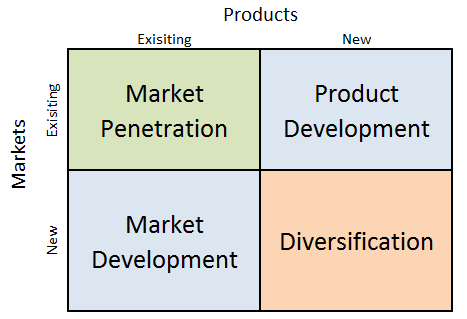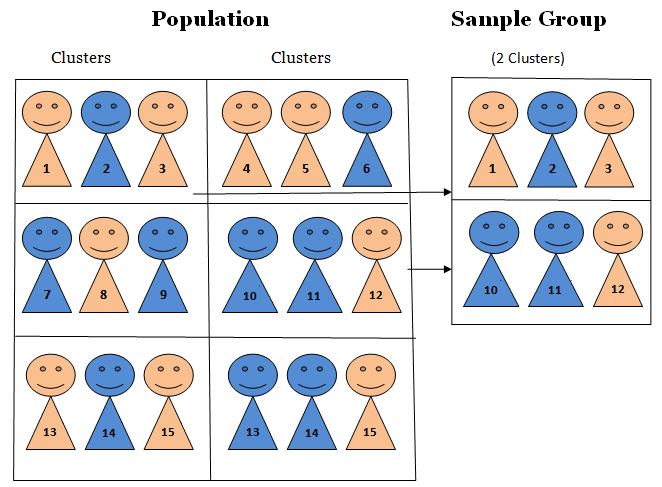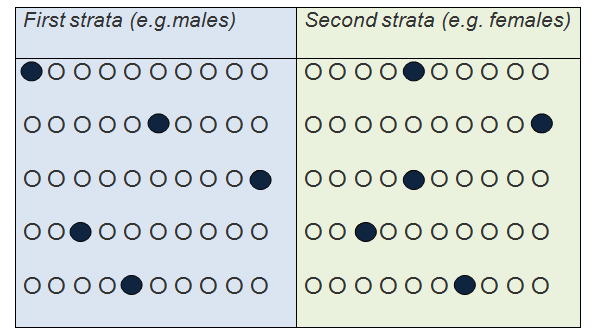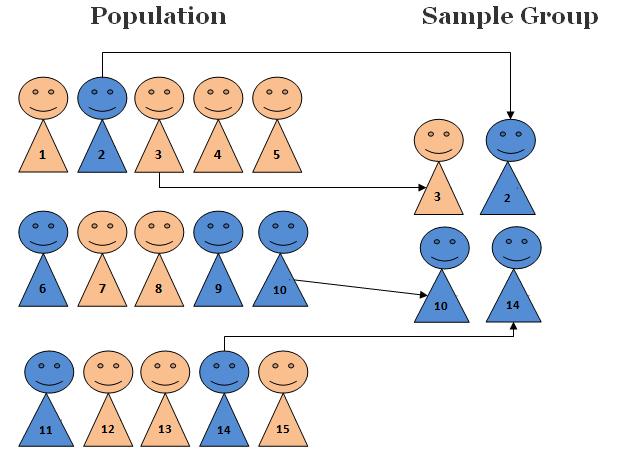
Amazon organizational structure can be classified as hierarchical. Senior management team include three CEOs and three senior vice presidents responsible for various vital aspects of the business reporting directly to CEO Andy Jassy. Amazon organizational structure has the following four key features: 1. Hierarchical corporate structure. Hierarchical structure at Amazon has developed due to the immense size of the business. The largest internet retailer in the world by revenue employs more than 1,3 million people worldwide.[1] 2. Hybrid project groups. Amazon corporate structure integrates hybrid project groups when developing new products and services. Specialists from various departments are attracted according to their skills and competencies required for the project. These employees can be attracted part-time reporting to both, the head of their departments and project leaders, or they can engage in the project full-time reporting to project manager only for the duration of the project. 3. Flexibility of the business. It is important to note that despite its large size, unlike many other companies with hierarchical organizational structure, Amazon remains highly flexible to adapt to frequent changes in the external marketplace. Moreover, the online retail giant leads changes in external business environment; it has caused disruptive innovation in e-commerce and currently it is about to cause a disruptive innovation in global logistics industry. Successful organization of hybrid project groups plays an instrumental role in maintaining flexibility of the business. Amazon organizational structure integrates many small teams that deal with various aspects of the business. Amazon founder and former CEO Jeff Bezos is credited with the introduction of ‘two pizza rule”. According to this rule, meetings should be held in teams small enough that could be all fed with only two pizzas. “Two pizza rule” continues to this day under the new CEO Andy Jassy. 4. Stability in the top management.…

Amazon business strategy can be described as cost leadership taken to the extreme. Range, price and convenience are placed at the core of Amazon competitive advantage. The global online retailer operates with a razor thin profit margin and succeeds due to a combination of economies of scale, innovation of various business processes and a constant business diversification. Founder and first CEO Jeff Bezos believes in focusing as a business strategy on things that do not change. At the outset of the business he reasoned that people always want low prices, selection and fast delivery. Exceeding customer expectations on these points has remained as the core of Amazon business strategy. Innovation and technology the online retail behemoth uses are simply instruments to pursue this core strategy. Moreover, Amazon business strategy is guided by four principles: customer obsession rather than competitor focus, passion for invention, commitment to operational excellence, and long-term thinking.[1] The following four points constitute the cornerstones of Amazon business strategy: 1. Regularly entering into new niches and segments. Started only as an online shop for selling physical books in 1997, today Amazon sells anything that can be sold online in the global scale. Sophisticated global logistics represents one of the solid bases of Amazon competitive advantage. The tech giant has used this advantage extensively to engage in successful business diversification. Recently, the company launched Amazon Home Services, a simple way to buy and schedule local professional services as a continuation of its diversification strategy.[2] Currently, the tech giant operates in increasing range of industries including e-commerce, cloud computing, artificial intelligence, consumer electronics, entertainment, digital distribution, B2B distribution, self-driving cars and supermarkets. As the largest internet company by revenue in the world, Amazon frequently disrupts the industries it chooses to enter. The e-commerce giant occasionally finds new niches and segments accidentally, while…

Amazon Ansoff Matrix is a marketing planning model that helps the e-commerce and cloud computing company to determine its product and market strategy. Ansoff Matrix illustrates four different strategy options available for businesses. These are market penetration, product development, market development and diversification. Amazon Ansoff Matrix Within the scope of Ansoff Matrix, Amazon uses all four growth strategies in an integrated manner: 1. Market penetration. Market penetration refers to selling existing products to existing markets. Amazon uses market penetration strategy aggressively. Sophisticated user experience features in general and recommendations feature on e-retailer’s website in particular play an important role in the application of market penetration strategy. Specifically, Amazon focuses on user experience personalization thanks to efficient application of data science and machine learning. The e-commerce giant collects and possesses a vast amount of data related to customers such as age, sex, lifestyle, habits and preferences. The company uses artificial intelligence (AI) to analyse this data and suggest products that a particular customer is highly likely to buy. 2. Product development. This involves developing new products to sell to existing markets. Product development is one of the core strategies used by Amazon. Started by Jeff Bezos selling only physical books online in 1997, today Amazon sells anything that can be sold online. The largest internet retailer in the world by revenue sells more than 500 million products, including products sold by third parties on Amazon platform. Top product categories include clothing, shoes, jewellery, home and kitchen appliances, books, electronic devices, sports and outdoor items and others. The e-commerce and cloud computing company produces increasing number of products under the private label as well. 3. Market development. Market development strategy is associated with finding new markets for existing products. Amazon is engaged in market development in a systematic manner. Started only in…

In non-probability sampling (also known as non-random sampling) not all members of the population have a chance to participate in the study. In other words, this method is based on non-random selection criteria. This is contrary to probability sampling, where each member of the population has a known, non-zero chance of being selected to participate in the study. Necessity for non-probability sampling can be explained in a way that for some studies it is not feasible to draw a random probability-based sample of the population due to time and/or cost considerations. In these cases, sample group members have to be selected on the basis of accessibility or personal judgment of the researcher. Therefore, the majority of non-probability sampling techniques include an element of subjective judgement. Non-probability sampling is the most helpful for exploratory stages of studies such as a pilot survey. The issue of sample size in non-probability sampling is rather ambiguous and needs to reflect a wide range of research-specific factors in each case. Nevertheless, there are some considerations about the minimum sample sizes in non-probability sampling as illustrated in the table below: Nature of study Minimum sample size Semi-structured, in-depth interviews 5 – 25 Ethnographic 35 – 36 Grounded theory 20 – 35 Considering a homogeneous population 4 – 12 Considering a heterogeneous population 12 – 30 Sizes of non-probability sampling[1] The following is the list of the most popular non-probability sampling methods and their brief descriptions: Non-probability sampling method Description Judgement Sampling (Purposive Sampling) Researcher chooses samples purely on the basis of her knowledge and credibility Quota sampling Researcher chooses sample group members on the basis of their shared traits or characteristics Convenience sampling Researcher chooses population members that are conveniently available to her. Voluntary response sampling Respondents voluntarily choose to participate in a study, usually…

Cluster sampling (also known as one-stage cluster sampling) is a technique in which clusters of participants representing the population are identified and included in the sample[1]. This is a popular method in conducting marketing researches. The main aim of cluster sampling can be specified as cost reduction and increasing the levels of efficiency of sampling. This specific technique can also be applied in integration with multi-stage sampling. A major difference between cluster and stratified sampling relates to the fact that in cluster sampling a cluster is perceived as a sampling unit, whereas in stratified sampling only specific elements of strata are accepted as sampling unit. Accordingly, in cluster sampling a complete list of clusters represent the sampling frame. Then, a few clusters are chosen randomly as the source of primary data. Cluster sampling process can be single stage or multistage. In single stage sampling, all members of selected clusters are included in the study, whereas in multistage sampling additional sampling methods are used to choose certain individuals within selected clusters. Area or geographical sampling can be specified as the most popular version of cluster sampling. Specifically, a specific area can be divided into clusters and primary data can be collected from each cluster to represent the viewpoint of the whole area. The pattern of cluster analysis depends on comparative size of separate clusters. If there are no major differences between sizes of clusters, then analysis can be facilitated by combining clusters. Alternatively, if there are vast differences in sizes of clusters, probability sampling proportionate to sample size can be applied to conduct the analysis. Application of Cluster Sampling: an Example Imagine you want to evaluate consumer spending on various modes of transportation in Greater London. Since Greater London is a large area, we need to sample from only…

Stratified sampling is a probability sampling method and a form of random sampling in which the population is divided into two or more groups (strata) according to one or more common attributes. These attributes can be sex, age, income, level of education etc. according to aims and objectives of the study. Stratified random sampling intends to guarantee that the sample represents specific sub-groups or strata. Accordingly, application of stratified sampling method involves dividing population into different subgroups (strata) and selecting subjects from each strata in a proportionate manner. The figure below illustrates simplistic example where sample group of 10 respondents are selected by dividing population into male and female strata in order to achieve equal representation of both genders in the sample group. Stratified sampling can be divided into the following two groups: proportionate and disproportionate. Application of proportionate stratified random sampling technique involves determining sample size in each stratum in a proportionate manner to the entire population. For example, if the entire population for a research is 5000 people, in proportionate stratified random sampling the group can be divided into five strata with 1000 people in each stratum. In disproportionate stratified random sampling, on the contrary, numbers of subjects recruited from each stratum does not have to be proportionate to the total size of the population. If disproportionate stratified random sampling is applied in a research with 5000 people, the population can be divided into five strata with following unequal numbers of population in each stratum: 1000, 1500, 1200, 800 and 500. Accordingly, the application of proportionate stratified random sampling generates more accurate primary data compared to disproportionate sampling. Application of Stratified Sampling: an Example Suppose, your dissertation aims to explore leadership styles exercised by medium-level managers at Bayerische Motoren Werke Aktiengesellschaft (BMW AG). You have selected semi-structured in-depth…

Simple random sampling (also referred to as random sampling or method of chances) is the purest and the most straightforward probability sampling strategy. It is also the most popular method for choosing a sample among population for a wide range of purposes. This method is considered to be the most unbiased representation of population. Nevertheless, sampling error persists with this method, similar to other sampling methods. In simple random sampling each member of population is equally likely to be chosen as part of the sample. It has been stated that “the logic behind simple random sampling is that it removes bias from the selection procedure and should result in representative samples”[1]. Ideally, the sample size of more than a few hundred is required in order to be able to apply simple random method in an appropriate manner.[2] It can be argued that this method is easy to understand in theory, but difficult to perform in practice. This is because working with a large sample size is not easy and it can be a challenge to get a realistic sampling frame. Simple random sampling Many dissertation supervisors advice the choice of random sampling methods due to the representativeness of sample group and less room for researcher bias compared to non-random sampling techniques. However, application of these methods in practice can be quite difficult due to the need for the complete list of relevant population members and a large sample size. Other variations of random sampling include the following: Stratified random sampling Systematic random sampling Multistage random sampling Cluster sampling There are two popular approaches that are aimed to minimize the relevance of bias in the process of random sampling selection: method of lottery and the use of random numbers. The method of lottery is the most primitive and mechanical…

In systematic sampling (also called systematic random sampling) every Nth member of population is selected to be included in the study. It is a probability sampling method. Systematic sampling can be more suitable than simple random sampling because the former can be time-consuming. It has been stated that “with systematic sampling, every Kth item is selected to produce a sample of size n from a population size of N”[1]. This method requires an approximated frame for a priori but not the full list. Systematic sampling As it is the case with any other sampling method, you will have to obtain confirmation from your dissertation supervisor about your choice of systematic sampling, total size of population, size of your sample group and the value of N sample fraction before starting collecting the primary data. There are three types of systematic random sampling: 1. Systematic random sampling. In this method researcher determines sampling interval and starting from the random point uses this interval to select sample group members. 2. Linear systematic sampling. This method divides N population size into n groups, where each group consists of k Then, sampling interval k=N/n applied to form the sample group. 3. Circular systematic sampling. Population members are arranged in a circular manner and sample group members are chosen in a cyclic manner. Application of Systematic Sampling: an Example You can apply systematic sampling in your thesis in the following manner: 1. Label each member of the sample group with a unique identification number (ID). Accordingly, application of this method requires the knowledge of the size of total target population. You cannot use systematic sampling if you don’t know the size of the total population. 2. Calculate the sampling fraction by dividing the sample size to the total number of the population: The sampling…

Sampling techniques can be divided into two categories: probability and non-probability. In probability sampling, each population member has a known, non-zero chance of participating in the study. Randomization or chance is the core of probability sampling technique. Probability sampling methods use some form of random selection. Therefore, application of this method offers the highest chance of creating a sample that is truly representative of the population. In non-probability sampling, on the other hand, sample group members are selected non-randomly; therefore, in non-probability sampling only certain members of the population has a chance to participate in the study. The table below illustrates the main differences between probability and non-probability sampling methods. Probability sampling Non-probability sampling Randomly selected samples Subjective judgement of researchers are used to select samples Equal chance for each member of population to get selected Not everyone has equal chance to get selected Used to reduce a sampling bias Researcher is not overly concerned with sampling bias Effective to collect data from diverse population Useful in specific environment with sampling group members sharing similar characteristics Useful in obtaining accurate representation of population Does not help in representing the population accurately Finding correct audience is difficult Finding correct audience is simple Probability sampling comprises the following sampling techniques: Simple random sampling Stratified random sampling Systematic random sampling Multistage random sampling Cluster sampling Application of Probability Sampling: an Example Let’s suppose, your dissertation topic is ‘A study into employee motivation of ABC Company and the ways of increasing it’. You chose survey primary data collection method to achieve research objectives. Sampling process comprises the following four stages: 1. Identifying an appropriate sampling frame based on your research question(s) and objectives. ABC Company has 400 employees and accordingly, your sampling frame would be 400. 2. Determining a suitable sample size. You…

Questionnaires can be classified as both, quantitative and qualitative method depending on the nature of questions. Specifically, answers obtained through closed-ended questions (also called restricted questions) with multiple choice answer options are analyzed using quantitative methods. Research findings in this case can be illustrated using tabulations, pie-charts, bar-charts and percentages. Answers obtained to open-ended questionnaire questions (also known as unrestricted questions), on the other hand, are analyzed using qualitative methods. Primary data collected using open-ended questionnaires involve discussions and critical analyses without use of numbers and calculations. There are following types of questionnaires: Computer questionnaire. Respondents are asked to answer the questionnaire which is sent by mail. The advantages of the computer questionnaires include their inexpensive price, time-efficiency, and respondents do not feel pressured, therefore can answer when they have time, giving more accurate answers. However, the main shortcoming of the mail questionnaires is that sometimes respondents do not bother answering them and they can just ignore the questionnaire. Telephone questionnaire. Researcher may choose to call potential respondents with the aim of getting them to answer the questionnaire. The advantage of the telephone questionnaire is that, it can be completed during the short amount of time. The main disadvantage of the phone questionnaire is that it is expensive most of the time. Moreover, most people do not feel comfortable to answer many questions asked through the phone and it is difficult to get sample group to answer questionnaire over the phone. In-house survey. This type of questionnaire involves the researcher visiting respondents in their houses or workplaces. The advantage of in-house survey is that more focus towards the questions can be gained from respondents. However, in-house surveys also have a range of disadvantages which include being time consuming, more expensive and respondents may not wish to have the researcher in their houses…
